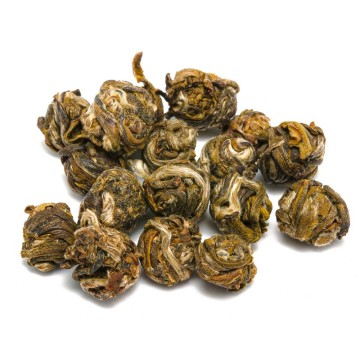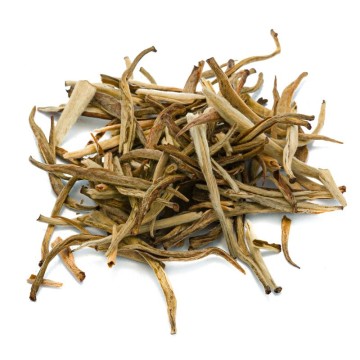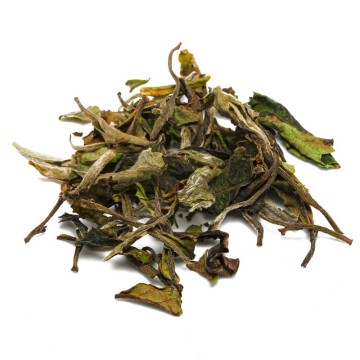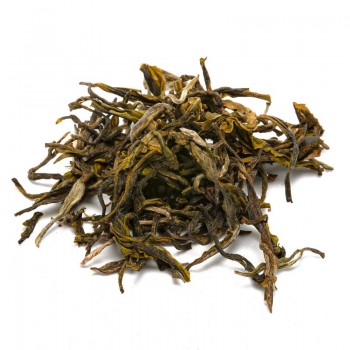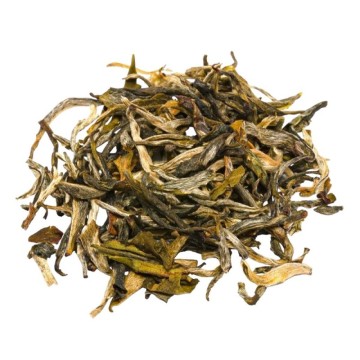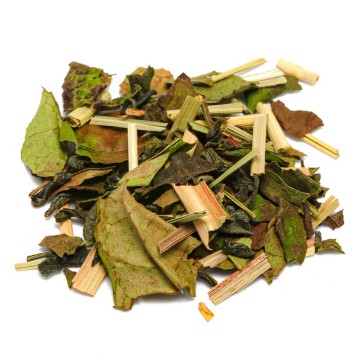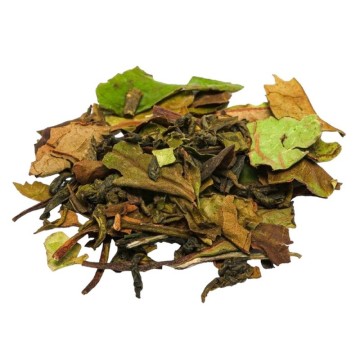The elements that make up the blend of this flavored and spiced white tea evoke exotic flavors and aromas. The complex combination of white and green tea already represents an intense and soft base. It is enriched by the spicy notes of ginger, cardamom, cloves, star anise; a fruity and citrus touch between orange and coconut, the lively nuances of pink pepper. The floral touch of safflower flowers enhances the delicacy of this sweet and fragrant tea, perfect for making us imagine ourselves in the Spice Islands. The union of the various teas is particularly rich, inserting the Pai Mu Tan white tea in a blend with different green teas. Pai Mu Tan (also known as Bai Mudan or White Peony) is very widespread and appreciated among Chinese white teas. It comes from the collection of a bud and two young leaves of some tea cultivars. Their processing gives a tea with a pale golden color, a full fresh, soft and sweet taste. Adding intense and fragrant notes to the blend are Chinese Sencha green tea, Jasmine green tea, Lung green tea, and Gunpowder green tea. Lung is a fresh and delicate green tea, which evokes dried fruit with a persistent aftertaste, while Gunpowder green tea introduces a slightly bitter and pungent note, suitable for combining with spices.
Properties and differences between white and green tea
These two types of tea are both light and rich in antioxidants, beneficial for our body. The combination of white tea and green tea gives similar characteristics and some differences that enrich the blend. As mentioned, both teas contain valid antioxidants, such as catechins, useful for the well-being of our cells with respect to the damage that free radicals could cause. The antioxidant compounds of white and green tea give anti-aging properties. Both contain caffeine, although in smaller quantities than black tea. By stimulating the nervous system, a cup of this spiced tea helps as a tonic drink, against physical and mental fatigue, facilitating attention and concentration. The caffeine contained in this mix of white and green tea helps stimulate the body's metabolism and promote diuresis (drainage of body fluids). Together with the action of polyphenols, which help burn excess fat, it promotes correct weight management within a balanced diet. Furthermore, both teas promote normal intestinal function by acting beneficially on a digestive level. This property of white tea, orange and spices, is enhanced by the spicy ingredients, coconut and orange, which have digestive properties. The difference in taste is noticeable if drunk individually, since white tea is reserved especially for those who want to enjoy the maximum benefits of well-being with a delicate flavor. In this case, however, the soft and refined taste of white tea is put in the background for a complex flavor. White tea and green tea together can offer a whole range of flavors: fresh, vegetal, sweet, nutty, up to some bitter and hay notes (in Pai Mu Tan).
Nutritional values of white tea orange and spices
It has many antioxidant polyphenols - flavonoids, catechins, flavanols. It makes nutrients available such as minerals (fluoride, calcium, zinc, magnesium and potassium), tannins and amino acids. It provides the body with methylxanthines, alkaloids that include caffeine (theine), theophylline and theobromine.
Where can you find white tea orange and spices?
Our online store Natura d'Oriente selects the best loose leaves of white tea, offering different varieties; including this blend of elements between white tea, green tea, spices, fruits and flowers. You can find it available for sale online in practical freshness-saving packs of 25 g, 50 g, 100 g and 150 g. How to make white tea infusion
You can prepare this tea with the classic Western technique, inserting 3-5 grams of the mixture into a strainer or infuser. You must insert the infuser into a cup (250 ml), Heat the water to about 70-80 °C and then pour it into the cup. The infusion can last from 2 to 3 minutes.
Where does white tea with orange and spices come from
Both white tea and green tea come from the same plant, Camellia sinensis. Oxidation during processing is different, however, since white tea is only slightly oxidized, while green tea is even less so (oxidation is stopped immediately after harvesting, by steam). Spiced tea, on the other hand, is typical of the Indian tradition such as chai tea (or masala chai) now widespread in South-East Asia and throughout the world. It is considered a relaxing and thirst-quenching Ayurvedic drink, in which pungent spices act as a purifying and regenerating stimulus. It is usually created with black tea but there are also variants withwith green or white tea - the presence of green tea in this combination is reminiscent of the typical Kashmiri chai tea. The spice mixture, called karha, can vary with different ingredients, and for this reason, the classic spices (ginger, cardamom, pepper and cloves) can be combined with fruity and floral elements as in this mixture.
What happens if I drink too much white tea, orange and spices?
This tea is generally considered safe to drink, as is green tea, following a moderate intake. On the contrary, excessive consumption of this tea, and therefore of caffeine, can trigger unwanted effects. The presence of caffeine in the mixture can cause nervousness, difficulty sleeping, headaches, digestive problems, diarrhea, nausea, stomach pain, reflux and gastric acidity. Furthermore, since the mixture is composed of numerous ingredients, it is good to evaluate the presence of components for which the possible individual reactions of allergy and intolerance are known.

![tea white orange spices [Natura d'Oriente] tea white orange spices [Natura d'Oriente]](https://www.naturadoriente.com/3364-large_default/white-tea-orange-and-spices.jpg)
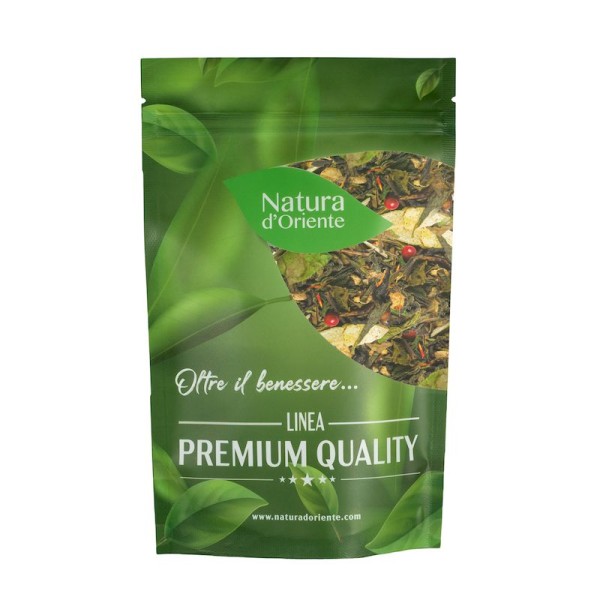



![tea white orange spices [Natura d'Oriente] tea white orange spices [Natura d'Oriente]](https://www.naturadoriente.com/3364-home_default/white-tea-orange-and-spices.jpg)




 No reward points for this product.
No reward points for this product.
